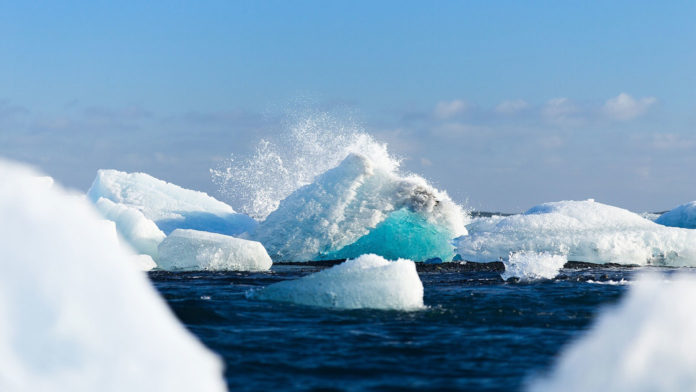Polar ice at the North and South Poles are a whole world apart. But despite thousands of kilometres of distance, the oceans between them mean they are far more connected than we previously realized.
In an international study led by researchers at McGill University, 40,000 years of geological records were used to examine this link, including polar ice cores, sediment cores from the ocean floor, and historical data on shorelines. That’s long enough to capture the last Ice Age, more formally known as the Last Glacial Maximum, which happened about 26,000 to 20,000 years ago. The study was published in Nature.
The team built a mathematical model to simulate changes in sea levels and in polar ice in both hemispheres simultaneously. The data suggest that rapid ice retreat at the North Pole forced accelerated and synchronous melting at the South Pole.
Conversely, ice accumulation at the North Pole was also correlated with synchronous periods of ice growth at the South Pole. These relationships were true even when the Earth’s climate was overall much colder than it is today.
The result is the opposite of what might be expected considering the opposite seasons at the opposite poles. North of the Arctic Circle, there are regions bathed in daylight all summer long. But at this time of year, the opposite is true south of the Antarctic Circle, where there is no sunlight for months at a time. It would be reasonable to expect that polar ice growth and retreat would be tied to their respective seasons, and therefore be asynchronous.
However, solar irradiation at the ice surface isn’t the only factor that can cause polar ice to retreat. As ice melts at the North Pole, it triggers rising sea levels around Antarctica, and the ocean’s warmth transfers to the ice from below.
This in itself is a major finding of the new model, as global sea level changes when polar ice melts isn’t the same everywhere; the Earth’s rotation, gravity, and deformation of solid earth — in particular how earth can rise when the weight of ice is lifted as it melts — all affect how the water distributes.
“Ice sheets can influence each other over great distances due to the water that flows between them,” said lead author Natalya Gomez, professor of Earth and planetary sciences at McGill University in a press release.
“It’s as though they were talking to one another through sea level changes.”
This synchronization had never before been explained by mathematical models, indicating that sea level connections between polar ice in the north and the south are an important factor in explaining the phenomenon.
“The scale and complexity of ice sheets and the oceans, and the secrets of the Earth’s past climate that are locked up in the geological record are fascinating and inspiring,” added Gomez.
“Our results highlight how interconnected the Earth system is, with changes in one part of the planet driving changes in another. In the modern era, we haven’t seen the kind of large ice sheet retreat that we might see in our future warming world. Looking to records and models of changes in Earth’s history can inform us about this.”








































